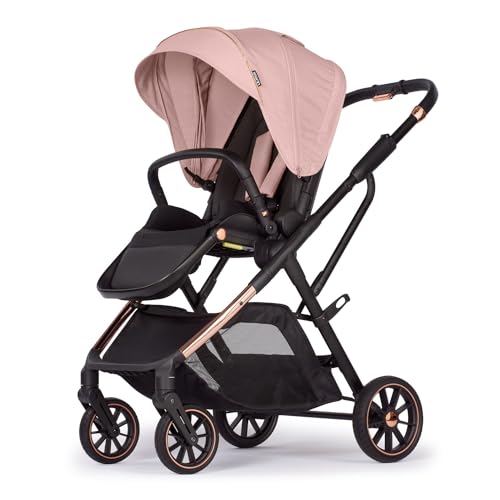Who's The Top Expert In The World On Pushchair Single?

What is a Pushchair Single?
single pushchairs www.pushchairsandprams.uk is designed to carry a single child (although some can be used from birth using an infant car seat or carrycot). Some are lightweight and can convert into a double.

It is a top choice for families due to its sleek, modern design and features, such as adjustable handles for height and a huge shopping basket. It comes with machine-washable fabric as well as a footmuff – an essential accessory in colder temperatures.
Convertible
If you're searching for a single stroller that can adapt to your child's needs look into a convertible model. This kind of stroller comes with hammock seats that can transform into a carrycot, and it's an ideal choice for babies. It's also lightweight and easy to fold.
The Larktale Crossover is a wagon/stroller which converts easily into a double-seater, without the need for any tools. It is a great option for parents as it comes with many features, including an enormous undercarriage that can be used in both modes and an organizer that hangs from the push bar. There are a few drawbacks, like the confusion of the zipper to attach the back of the seat 1 in wagon mode and the size of cup holders.
Brakes
A good single pushchair will have two braking systems. The hand brake is typically a small, lever-like thing on the chassis. It is possible to turn it down to stop the pushchair and then push it up to continue. This is helpful in urban areas, where you may need to slow down quickly on the pavements in shopping centres where pedestrians might be present. The other type of braking system is the front wheel brake system that is found on more expensive pushchairs, such as the phil&teds dash as well as the Bugaboo Cameleon 3 which is activated by pushing the pedal in the same way as the brakes on bicycles. This is particularly helpful when you're running, or going through rough terrain as it stops the pushchair right away and ensure your child's safety.
The left coupling 171 that connects the rear legs 57 and 19 consists of a rear leg mounting rod 173 to which rear leg 57 can be fixedly coupled, a gear mounted on the side surface 163 within the hub 3 of housing 33; a bushing 177 that is connected to the gear 175 which extends through a slot provided at the end of mounting bar 173 and a cable configured to wrap around J-shaped spool 181 and the post 31 of front leg 19. The left coupling system 171 for the rear leg 57 as well as the front leg 19 includes a rear leg mounting bar 173 to which the rear leg 57 is fixedly coupled and a gear 175 that is mounted on an end surface 163 of the housing 33 that is located within hub 3; the spool component 181 and post 31 of the front leg 19 wrapped around the J-shaped spool component 181 in corresponding slot 179 located at the end of the mounting bar 173 and a coiled cable 183.
Braking system 215 has an initial end 227 that is designed to be in contact with the brake cam when the braking cam is in the second position, and the second end 229. The second end of the lever for braking has a variety of teeth 231. The teeth are designed to engage the teeth of a gear 233 that is driven by a stroller 1's first rear wheel 59. When the brake lever is released the braking cam stops the rotation of the rear wheel 59 and movement of the stroller 1. The brake system is operated by hand.
Seat unit/carrycot
A pushchair single is a type of infant travel device for older infants (6 months +) who are just beginning to sit up and view the world. These can often be converted into a pram. Prams usually include more sophisticated features and are generally designed for infants and toddlers, and have extra padding to keep your child comfortable.
Many pushchairs can be combined together with car seats to create an entire travel system, ideal for taking sleepy babies from the car to the pushchair without causing any disturbance. Some also feature a carrycot which is ideal for infants, and some come with a seat unit that you can use when your baby is ready to transition from the carrycot.
The majority of pushchairs that are 'from birth' come with a option of 'facing directions' for the car seat or seat unit, either parent facing to help bond with baby or facing the world so they can discover the world. Some even have the option to attach an additional carrycot or infant carrier, or ride-on board for growing families.
A good pushchair should be able to move with ease across a variety surfaces, including pavements, grass and rough surfaces. A sturdy chassis and quality tyres are essential. Some tyres require air to be added periodically, while others are made from alternative materials like EVA and PU, which offer an enjoyable ride.
Your pushchair will be among the most used baby items you own, so it's worthwhile to invest in a top-quality model that's easy to clean and maintain. You can get rid of crumbs and spills with a baby-wipe, but when you want to get rid of more stubborn marks, you can use the hot air from the hair dryer for 1-2 minutes.
